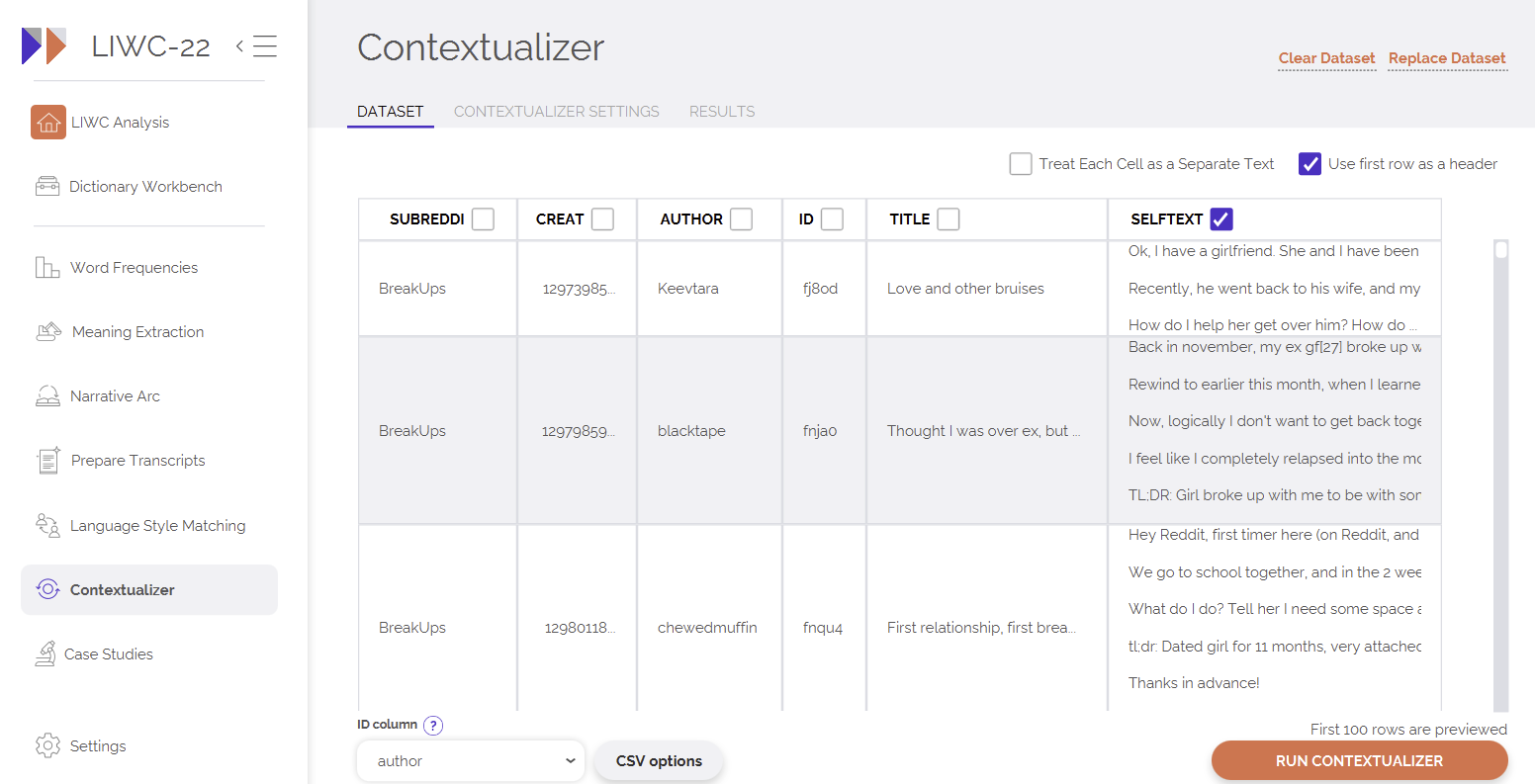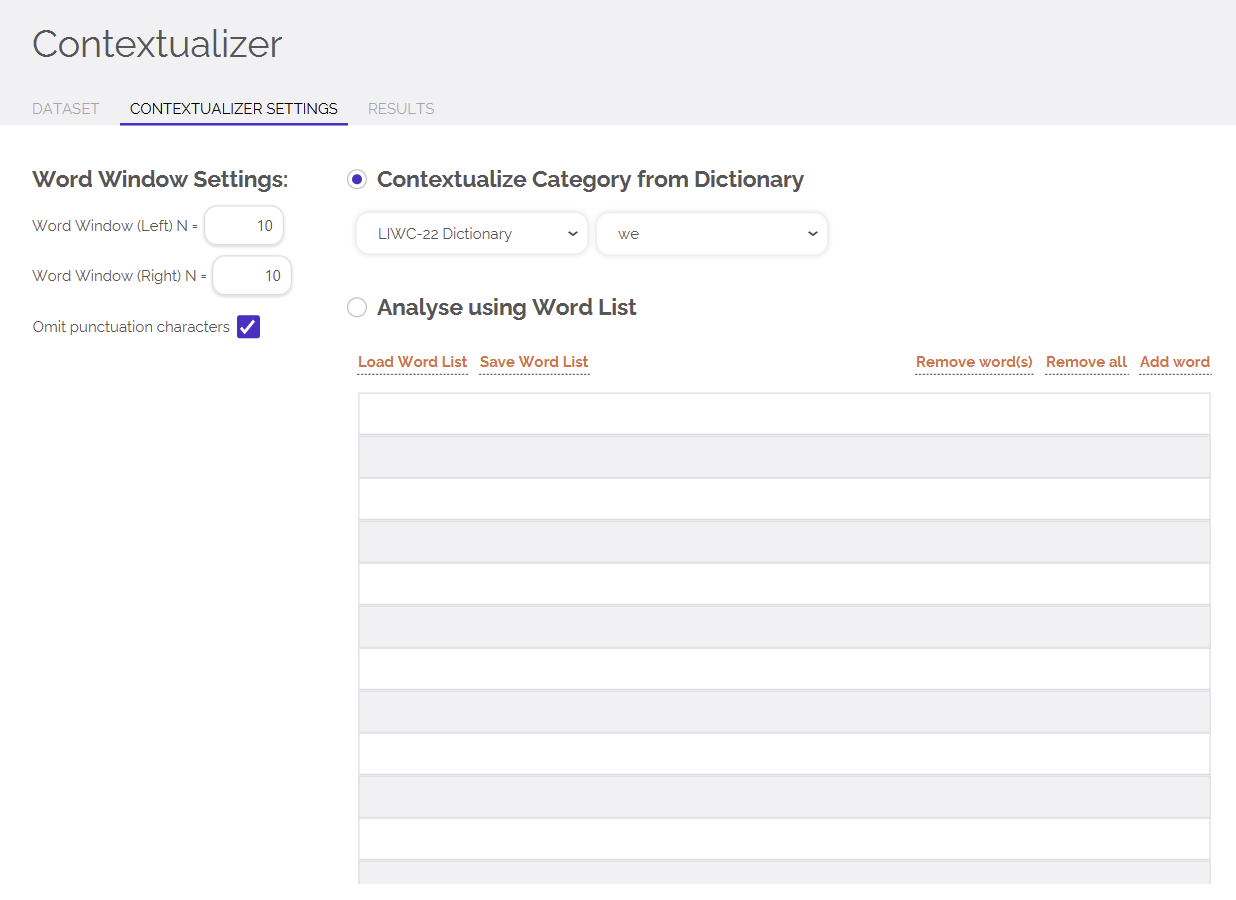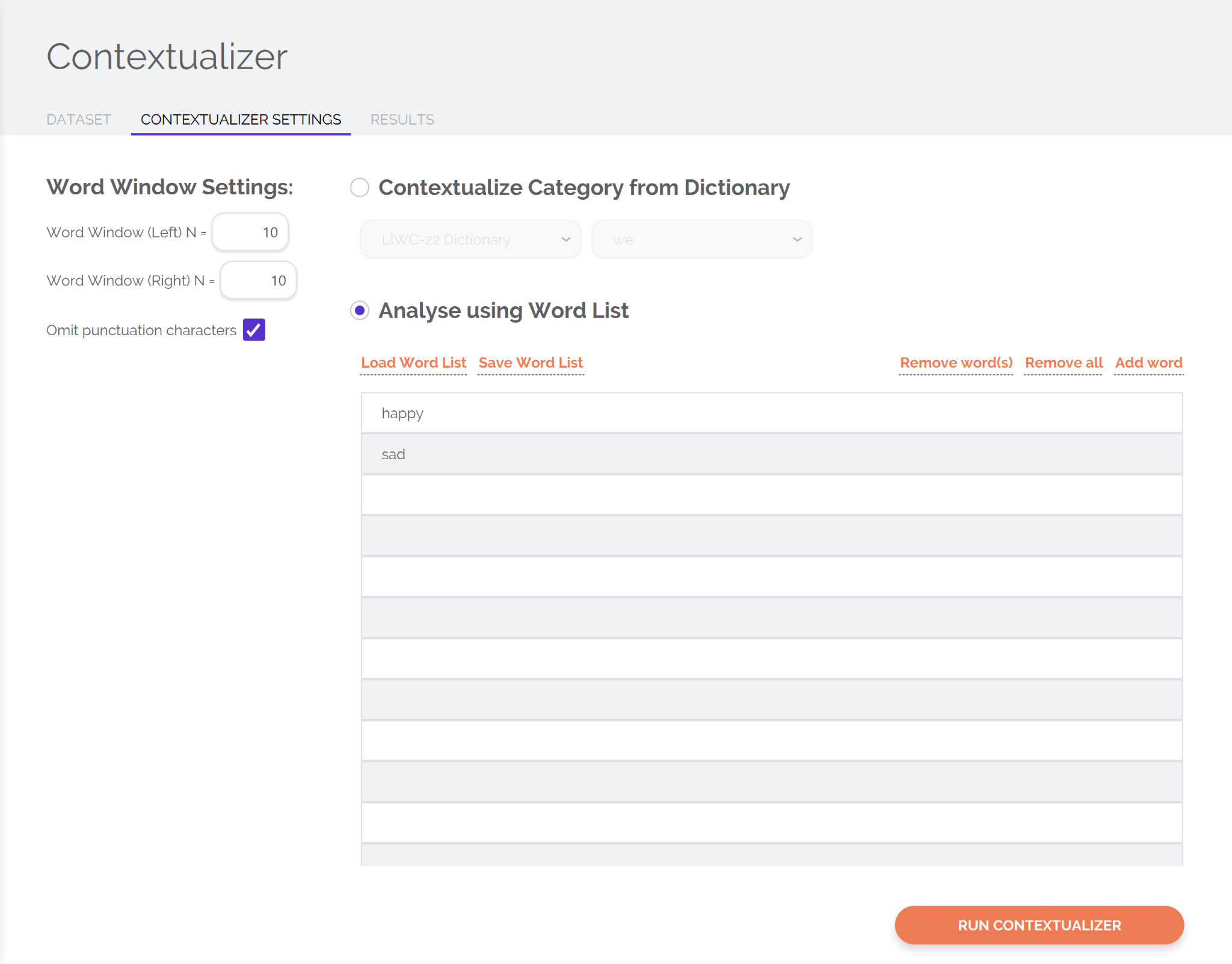Understanding and Using the Contextualizer
The Contextualizer can be used to view “key words in context” (KWIC). What this means is that the Contextualizer will take a word or a list of words that you provide and will analyze your dataset to show you the context in which your selected word(s) appear. For example, if you want to see how the word “happy” is used in your dataset, the Contextualizer will show you every time the word “happy” occurs, as well as the words surrounding it:
many Americans believed then that the nation would be happy and just and rational when prosperity came.
Understanding the context in which words of interest appear can help us to better understand how different words relate to various psychological states, as well as get a better sense of the “human” side of analyzing people’s words. We recommend using the Contextualizer regularly to gain insight into the categories of language that you find to be meaningful in your research — even the smartest of scholars can be surprised to learn that people use words in ways that they had never imagined.
Getting Started
First, import your dataset as a CSV or Excel file, as a single text file, or as a folder containing a collection of texts.
Note: If analyzing data within a spreadsheet, LIWC-22 will show you a preview of your dataset and ask you to indicate which column(s) you want to analyze as text. You can choose to analyze each column of text separately by checking the “Treat Each Cell as a Separate Text” option. Otherwise, the Contextualizer will aggregate the text columns within each row for analysis. To make your output easier to link back to your original data, we recommend that you also have some type of an “Identifier” column in your dataset (e.g., Participant Numbers, Book Title, etc.). You can then choose which column of your dataset is the “ID” column at the bottom of the window.

Under the “Contextualizer Settings” tab, choose the number of words before and after each contextualized word that you want the Contextualizer to extract. In the example below, 10 words before and after each contextualized word was chosen.

Choosing Words to Contextualize
You can contextualize words from specific dictionaries in LIWC, or you can provide a list of your own words/phrases. Above, words from the “we” dictionary in LIWC-22 were being contextualized. If you would like to analyze your own custom word list, choose the “Analyze using Word List” option, then add in any words that you would like for the Contextualizer to capture. Can can also save your word list for later by exporting it to a file.
Note: When using your own word list, you can also use wildcards. For example, the word “happ*” will capture words like “happiness” and “happy” — but be careful! It will also capture words like “happens” and “happening”.

After that, you hit the “Run Contextualizer” button and then wait for your results! Waiting is the hardest part, as they say.
PROTIP: You might find that the context of certain words (or categories of words) are themselves incredibly interesting, psychologically speaking. You can export your Contextualizer output, then analyze the "context" itself separately using something like the Meaning Extraction Method or LIWC Analysis for more rich insights. See, for example:
- Fridman, I., Fagerlin, A., Scherr, K. A., Scherer, L. D., Huffstetler, H., & Ubel, P. A. (2021). Gain–loss framing and patients’ decisions: A linguistic examination of information framing in physician–patient conversations. Journal of Behavioral Medicine, 44(1), 38–52. https://doi.org/10.1007/s10865-020-00171-0
- Platten, S., Haji, R., & Boyd, R. L. (2020). Humanizing and dehumanizing themes of Muslims surrounding 9/11: Computerized language analysis [Poster]. 81st Canadian Psychological Association Annual National Convention, Montréal, Quebec, Canada.
- Jordan, K. N. (2020). Understanding political leaders and political processes through language [Thesis]. https://doi.org/10.26153/tsw/12373
- Gulzar, B. (2021). Civil-military coordination a necessary condition in rallying the public in Pakistan. https://nur.nu.edu.kz/handle/123456789/5388
 LIWC
LIWC